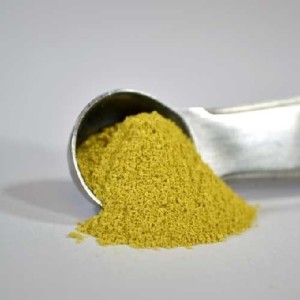If you are a regular reader you know that I work for Al Sears, MD, a world-renowned anti-aging doctor. I get to be involved firsthand with cutting-edge anti-aging therapies, herbs, supplements, serums and techniques.

I love what I do and have always been passionate about living healthy and youthful.
The reason I wanted to give that introduction was because Dr. Sears recently wrote an article about quercetin. It’s a nutrient with very powerful anti-aging properties.
Today, I want to share that article with you.
I’m also working on other special articles and reports. In the coming weeks I will be sharing information about detoxing, the anti-aging paleo diet for women, and will have my first report on celebrity anti-aging secrets.
To a younger more healthy you!
Sandy
Sandy DeRose
Winter wind and cold temperatures suck the moisture right out of your skin. And even though I’m in Africa, where the weather is moderate, winter in the U.S. has seen some low temperatures already.
Even where my office is in the south, we get used to humidity, but wintertime weather changes can leave you with dry red patches and deep wrinkles.
Today I want to tell you about a little known nutrient that soothes your winter skin and makes it firm and moist.
It can put new life into your skin deep down, at the cellular level.
That’s important because when your skin cells age, they stop making new, fresh copies of themselves. You start to see wrinkles and dull, tired skin.
But there’s an , leaving you fresher-faced and vibrant looking.
It’s a simple bioflavonoid found in many fruits and vegetables, especially the skin of apples, called quercetin (pronounced kwer-suh-tin). And it has the remarkable effect of renewing the youth and power of human skin cells.
In fact, there’s a little-known study I found that looked at the effects of quercetin on aging skin cells that were no longer making new copies. After treating the skin cells with quercetin, they were revitalized and started to reproduce again.1
Quercetin can also improve skin elasticity, giving you a fresh-faced glow.
When researchers apply quercetin directly to skin, it increases collagen by 23% in just 72 hours.2 Collagen is essential to firm healthy skin because it forms the supporting mesh beneath your skin. It keeps your skin tight and wrinkle-free.
Other research shows quercetin can fade away age spots and make spider veins disappear.3 It can also help soothe the redness that often occurs in harsh winter weather because it reduces inflammation.
Quercetin-rich foods help soothe, revitalize, and protect your skin. I recommend eating 15 to 40 grams per day. You can get that from a few servings of quercetin foods like red wine, tea, apples, kale, tomatoes, lemons, cranberries, grapes, and berries.
Foods in the allium family are also high in quercetin. They include onions, scallions, chives, leeks, shallots, and garlic.
One of my favorite sources of quercetin is Peruvian quinoa. The Inca called it the “mother grain.” But it’s not a grain at all.
It’s actually a seed. Quinoa cooks like rice and is delicious. I also like it because it’s gluten-free and has twice the protein and fiber of rice.
For damaged skin you may want to get even more quercetin than food alone can provide. That means about 500 mg per day, and for that you’ll probably need to supplement.
Look for the glucoside form. It’s also called isoquercetin or quercetin 3-glucoside.
Compared to other forms, isoquercetin reaches the bloodstream 10 times faster.4 And animal studies show it’s three times more bioavailable.5 I recommend taking 250 mg twice a day.
You can also apply quercetin directly to your skin. Studies show it can penetrate into the epidermis. But, it’s best to look for products with liposome technology.6 This allows the quercetin to be coated in a layer of fat that penetrates skin cells even better, and slow release over the entire day.7
That allows quercetin to actively protect your skin from harsh winter weather all day long.
To Your Good Health,
Al Sears, MD
Primal Force
My Pure Radiance
AlSears.com
1. Agnew-Blais J, Wassertheil-Smoller S, Kang J, Hogan P, Coker L, Snetselaar L, Smoller J. “Folate, Vitamin B-6, and Vitamin B-12 Intake and Mild Cognitive Impairment and Probable Dementia in the Women’s Health Initiative Memory Study.” J Acad Nutr Diet. 2014; pii: S2212-2672(14)01056-9.
2. Holmes V, et al, “Homocysteine is lower in the third trimester of pregnancy in women with enhanced folate status from continued folic acid supplementation,” Clin Chem. Mar 2005; 51(3): 629-634.
3. McNulty B, et al, “Impact of continuing folic acid after the first trimester of pregnancy: findings of a randomized trial of Folic Acid Supplementation in the Second and Third Trimesters,” Am J Clin Nutr. 2013; 98(1): 92-98.
4. Eussen S. “The association of betaine, homocysteine and related metabolites with cognitive function in Dutch elderly people.” Br J Nutr. 2007;98(5):960-8.
5. Fenech, M, et. al. “Folate, vitamin B12, homocysteine status and chromosome damage rate in lymphocytes of older men,” Carcinogenesis. 1997; 18(7): 1329-1336.
6. Paul L, et. al. “Telomere length in peripheral blood mononuclear cells is associated with folate status in men,” J Nutr. 2009; 139(7): 1273-1278.
7. Glei D, et. al. “Shorter Ends, Faster End? Leukocyte Telomere Length and Mortality Among Older Taiwanese,” J Gerontol A Biol Sci Med Sci. 2014. pii: glu191. [Epub ahead of print]
8. Paul L, et. al. “High plasma folate is negatively associated with leukocyte telomere length in Framingham Offspring cohort,” Eur J Nutr. 2014. [Epub ahead of print]